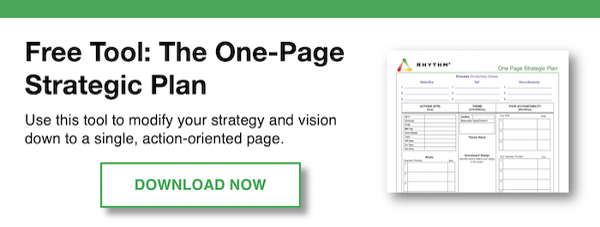I debated calling this blog Stage Secrets of Great Communicators only to then argue with myself that the stage for you could be the floor of your shop, the hallway of the corporate office, or your boardroom with just a handful of people.
stage for you could be the floor of your shop, the hallway of the corporate office, or your boardroom with just a handful of people.
It’s not an easy thing to get others' attention, to persuade them to your way of thinking, to have them walk away prepared to think, plan, say, or do something different. While we could debate that some people naturally have that skill, let’s instead focus on you. What’s your ability to make your point? No matter how well you’ve developed the skill, I’ve found that it can be improved – remarkably, by following a simple process I learned in the fourth grade. The process I learned can transform your ability to communicate.
Midway through the 4th grade, elections were announced for fifth-grade officers. For some inexplicable reason, I decided I should run for vice president of the fifth grade. I wish I could explain it, but c’mon, I was a fourth grader.
Fast-forward through the creation of posters, a theme, and a hint of bravado, and finally, the day I had prepared for had come. My dad, who was a thoughtful, methodical person, helped me prepare. I had my key points outlined, my conclusion in place, and I practiced at least twenty times with my dad as an audience of one.
To give you a hint of how long ago this happened, I wore a sports jacket for the event. Neatly tucked away in my jacket pocket was my one-page speech, my crutch, my confidence, my rock. I needed it because that was the day I got to make my speech to the entire student body. There were about 225 prisoners in grades 1-6 who were forced to sit and listen to all the electoral promises.
It was unfortunate that I ran for vice president since the candidates for secretary and treasurer all went before me. I sat on the stage for all to see while I waited. To make matters worse, my last name, Pruitt, put me alphabetically at the end of the speakers list. Finally, it was my turn.
I confidently walked to the lectern, while smoothly pulling out my practiced and prepared speech, laid it out in front of me, and looked up at the audience. As I looked out at what appeared to be 225,000 people, a tsunami of fear washed away every hint of confidence. I stood there for what seemed like ten minutes, gripped the top of the lectern so tight I could crush the wood, and suddenly realized that my knees were literally knocking together. Finally, I mustered the courage to speak. I shouted, “I want to be vice president!” As soon as I uttered my last word, I turned and literally ran back to my seat.
I don’t remember what happened after that, but I do clearly remember telling myself that I would never stand up and speak in front of people again.
Fifteen years later, I was faced with a decision. I could force myself to speak up in front of people, or I could languish in mediocrity forever. I clearly remember the second half of that conversation that began “I will never stand up and speak in front of people again.” It was the second half (15 years later) when I finally decided, “I’m not going to let a fourth grader tell me what I can or cannot do.” I would learn how to communicate in a way that helped me succeed.
In hindsight, the lessons I learned were simple: When it’s your turn, stand up. When your thoughts are organized, speak up. When you’ve made your point, shut up. Since you’re now not speaking, sit down. I’ve been able to prove and refine this approach over a few decades, used it to coach professional speakers, helped CEOs prepare for their big speech, and watched teenagers win awards.
Success came from this fourth-grade framework, enhanced with experience. The experience led me to add three steps to help you create your most impactful, refined message. Sales people have used this approach to more clearly articulate their message and persuade potential clients. Human resource professionals have used the approach to clearly articulate a new benefits package. A project manager used the approach to better persuade management for needed resources, time, or scope changes. IT professionals have used it to better communicate with those less technologically inclined. Anyone can use it, and when they do, they’ll be more persuasive.
In my next blog, I'll outline the three steps and help you hone your message and build persuasive content. Meanwhile: stand up when it's when time to speak up, have your say, then shut up and sit down confident that you’ve made your point. My point? Never let a 4th grader tell you what you can or cannot do. And yes, you better listen – I was 5th-grade vice president!
Photo Credit: iStock by Getty Images




